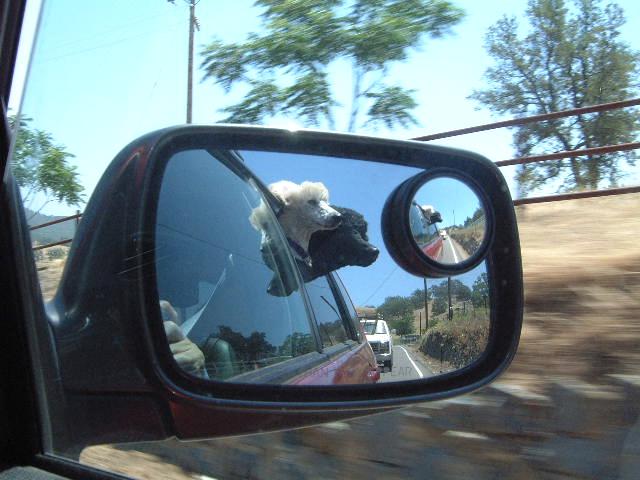Traveling With Your Pet
Traveling with your pet can be both fun and challenging. Before embarking on a voyage there are a number of things to consider.
How are you traveling and for how long:
Car Travel
Pets should have practice or trial car rides to see if they are a good traveler. Smaller pets will travel best in a carrier where they feel safe and secure. Many carriers are now available that have secure water bottles and food dishes- plan ahead if feeding and watering your pet is going to be necessary. Cats generally travel well in carriers. Sedation for anxious pets can be given safely if needed- consult your veterinarian before the trip so you can try the sedation and see how your pet reacts before getting on the road. Larger dogs should have a safety harness that connects to a seatbelt if needed.
Make sure your pet has a collar with a name tag on it on at all times in case they escape during a stop. A permanent ID like a microchip implanted by your veterinarian is also a great idea. Your pet should visit the family veterinarian before travel to make sure that they are healthy for the trip, to discuss plans, to get interstate health certificates if needed and to pick up a copy of current vaccination records etc.
Air Travel
There are many regulations and many airlines that will no longer transport pets. Be sure to check out specific airline for information. All air travel must be done with the pet in a carrier. Before traveling, be sure that your pet has become accustomed to being in the carrier for a significant length of time, depending on the travel distance. Smaller animals can often be kept with you in the cabin with prior reservations on some planes. Travel plans with the airlines must be pre-approved.
Try to schedule a direct flight without layovers or plane changes if possible. During the summer months try to avoid flying during the heat of the day. Likewise in Winter, try to fly during warmer daytime hours. When shipping a pet a long distance it is very important to consider the weather conditions. What are the potential temperature extremes that your pet could encounter? Talk to your vet about acclimation certificates if needed.
Sedation for a pet during air travel is not without risks. All sedatives have some side effects and can be very serious. Discuss sedation with your veterinarian prior to traveling to see if it is indicated or not. A nervous pet that can respond to changes in temperature is safer than a pet that is completely sedated and unable to respond to environmental changes.
Pet Records
If your pet has any kind of medication or medical condition, then have all the information and recent health records with you. It is wise to map out potential veterinary hospitals along the way if you are taking a road trip.
Remember to check and be sure that if you need a health certificate that it is done before you leave and not at the last minute. There are new regulations in getting health certificates and not all vets still offer them. Plan ahead!
This is a great website that has all kinds of information about traveling with your pet. It is fun and rewarding but planning ahead is a must for a safe trip for you and your pet.
www.pettravel.com/airline_rules.cfm
The government website on pet travel and regulations also has very useful information:
